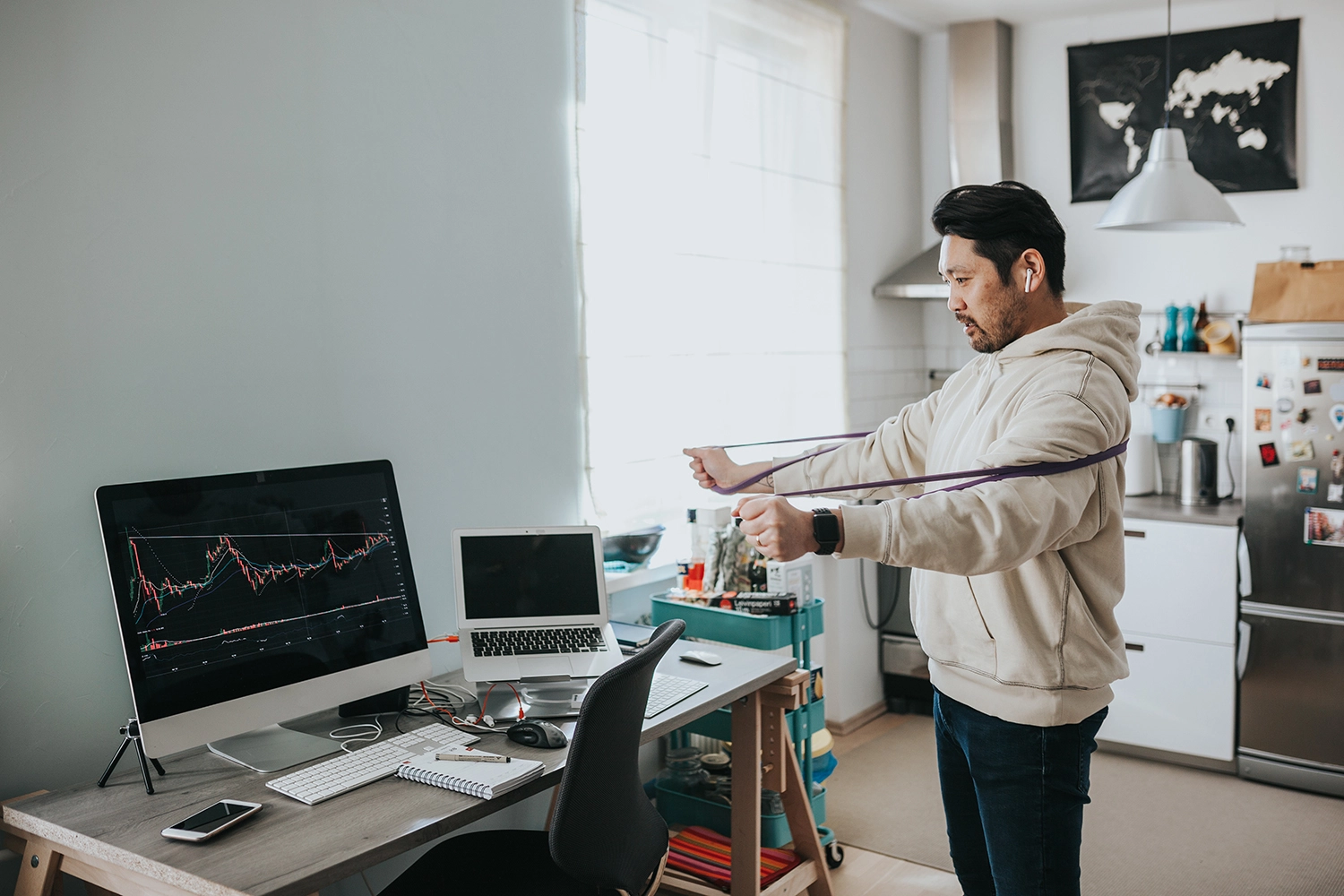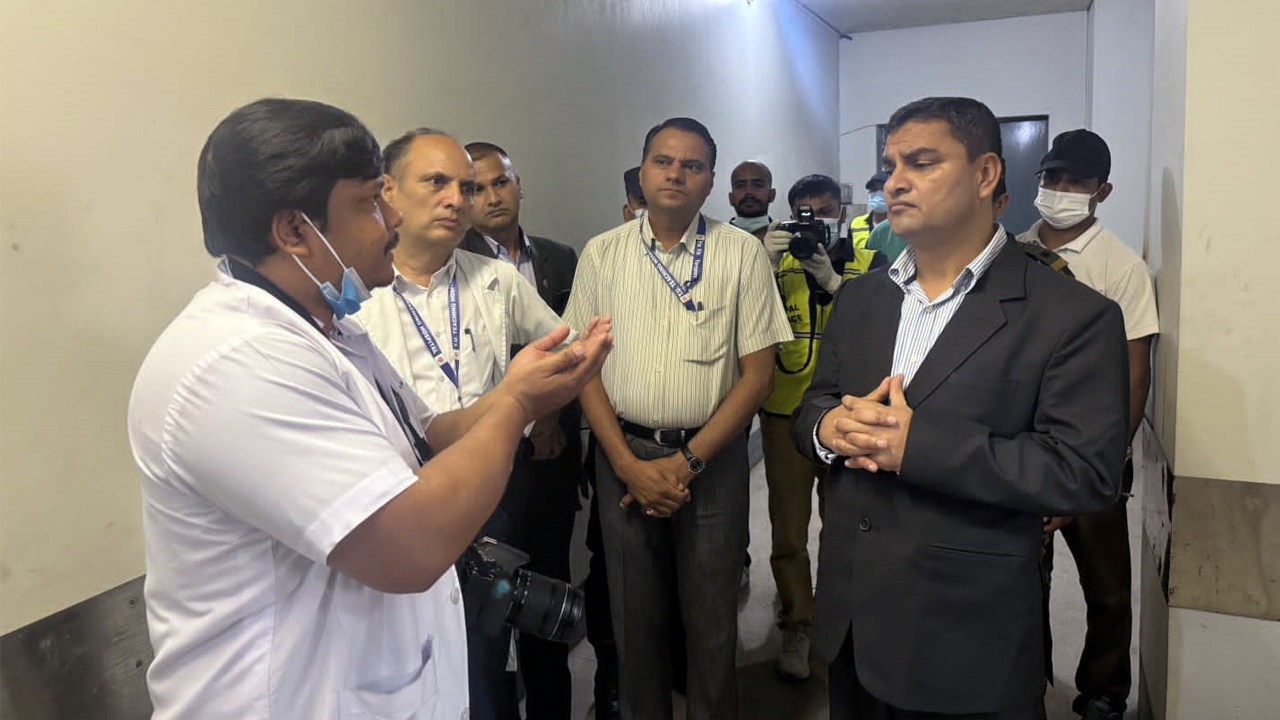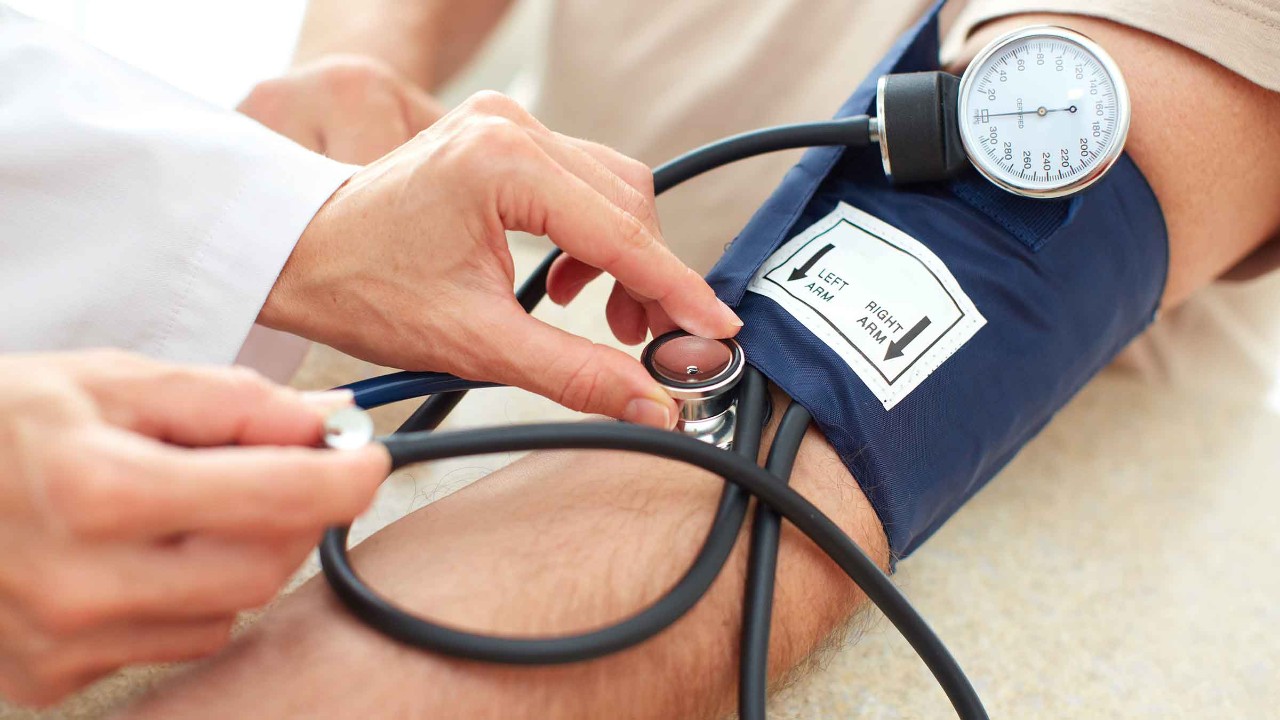6 desk exercises that help you get stronger while working
You can do squats, planks, pushups or even a get in a quick run all without leaving your desk

KATHMANDU: Research shows that mini workouts spread throughout the day are as effective as longer ones. That’s good news for people who work at a desk for 40 (or more) hours a week.
Sitting for long periods is never a good idea — you’ll live longer if you get up and move. But if you’re desk-bound for most of the workday, a lunchtime walk isn’t your only option for exercise, says physical therapist and athletic trainer Eric Moogerfeld, DPT.
“Depending on your office situation, you could fit cardio and strength training into your workday,” Dr. Moogerfeld says. Here’s what he recommends for exercising at your desk.
Cardio desk workouts
Research shows that short periods (under 10 minutes) of higher-intensity physical activity throughout the day can positively affect weight. Each daily minute of high-intensity exercise lowers your risk for obesity, Dr. Moogerfeld says.
“If you have to work at a desk, there are ways to make your desk work for you,” he adds. “Standing desks help reset your posture, but some desks and equipment offer cardio options as well.”
Exercise machines that are specific to desk workers can be a toughie if you work in an open office space or are on video calls all day, but they can be particularly useful for people who work from home or at least have a private office. Dr. Moogerfeld recommends:
Bike desks: These stationary bikes have a desktop where the handlebars should be. They can be a convenient way to fit in cardio exercise at work, especially if you’re on a lot of conference calls.
Treadmill desks: Working while walking can be tricky, but it’s great while watching training videos or doing research. Some portable treadmills fold and slide out of sight when you’re not using them.
Under-desk bikes and ellipticals: Portable, under-desk equipment gets your legs (and your heart) pumping while you sit at your desk.
6 strength-training exercises to do at your desk
You can still exercise at your desk even if you don’t have the privacy, space or budget for an under-the-desk gadget. These strength-training exercises require nothing more than your own body weight.
And building muscle strength helps you avoid injury, burn calories and regulate your mood.
Dr. Moogerfeld suggests trying these strength-training moves without leaving your desk:
1. Isometric muscle strengthening
“Isometrics involve contracting (squeezing) and relaxing muscles one at a time,” Dr. Moogerfeld explains. “And it’s the sneakiest way to exercise at work since no one will know you’re doing it.”
Focus on one muscle group at a time, contract it and hold for three to 10 seconds (depending on your fitness level). Work up to three sets of 10 repetitions.
Butt clenches (glutes): Squeeze your glute (butt) muscles as hard as you can and hold. You can do it sitting or standing.
Desk push (core): Stand and place your hands on a table or desk. Try to push the surface to the ground. You should feel your entire core engage.
Hand press (upper body): Sitting at your desk, press your palms together in front of your chest, with your elbows out to the side. Push your palms into each other and hold. It works your biceps, chest and triceps.
Thigh press (lower body): Sitting in your chair, place your palms against the outside of your knees. Push your knees against your palms, trying to open your legs.
2. Oblique twist
Oblique twists strengthen the muscles that run along either side of your abdomen. Strong obliques help burn fat, support your back and create good posture.
How to do an oblique twist:
- Sit at the edge of your desk chair with your feet flat on the floor.
- Contract your abs and sit back at a 45-degree angle.
- Extend your arms straight in front of you.
- Engage your core as you twist slowly to the right, keeping your arms aligned with your torso.
- Pause and hold.
- Now twist to the left side.
- Pause and hold.
- Rotate back to the front. That is one repetition (rep).
Make it more challenging by holding something in your hands (a weight, water bottle or medicine ball), or lift your knees so that your feet don’t touch the floor as you rotate.
3. Desk planks and pushups
Pushups and planks work your core and upper body at the same time. Consider doing a plank or a couple of pushups each time you get up from your desk — research shows the more pushups you can do, the lower your risk of cardiovascular disease.
How to do planks and pushups:
- Place your hands shoulder-width apart on the edge of your desk. Beginners can use a wall instead of a desk.
- Walk your feet back, shifting your weight forward until your arms are straight and your body is in a straight line from shoulders to feet.
- To do a plank, keep your core and glutes tight while holding the position for 30 seconds.
- To do a pushup, lower your body toward the desk until your elbows bend to a 90-degree angle. Push away until your arms are straight again. Aim for 10 reps.
4. Seated leg extension
Your quadriceps (thighs) are the biggest muscle group in your body — and you can strengthen them without leaving your desk chair.
How to do a seated leg extension:
- Sit in your chair, making sure your thighs are parallel to the ground (adjust the seat height if necessary).
- Keep your arms at your sides and your back straight. Slowly extend your right leg and keep your foot flexed. Don’t lock your knee.
- Aim to raise your leg as high as you can without pain.
- Return to the starting position. Repeat on the left side. Try to do 10 on each side.
Dr. Moogerfeld suggests you can keep some ankle weights in your desk to make the move harder once you get stronger.
5. Chair calf raises
Your calves help you run, walk, jump and balance. Calf raises strengthen them. Begin by doing calf raises while sitting. As you get stronger, put something heavy on your lap to add weight or perform calf raises while standing behind your chair.
How to do calf raises with your chair:
- Sit straight in your chair, with your back unsupported and your feet shoulder-width apart.
- Slowly raise your heels as if on your tiptoes and hold.
- Release and lower your heels back to the ground. Do 10 reps.
6. Chair squats
Weakened glutes and tight hip flexors can lead to “dead butt” syndrome — numbness and pain in the buttocks, hips and lower back associated with sitting too much. Doing chair squats before you sit at your desk can help strengthen those areas, Dr. Moogerfeld says.
How to do chair squats:
- Stand in front of your chair with your feet shoulder-width and toes pointing forward.
- Keeping your chest and head up, bend your knees and drive your hips back as if you were going to sit in the chair.
- Stop just above the chair and slowly rise back to the start position. Aim for 10 reps.
Tips for starting desk exercises at work
Whether you’re an exercise enthusiast or just starting to work out, making exercise part of your workday routine may be challenging. To help make it a habit:
- Find a partner who can be your workout buddy at work.
- Make exercise an office challenge by setting goals for steps, walks or desk exercises.
- Set alarms throughout the day to remind yourself to exercise.
- Reward yourself after you exercise a certain number of times or reach a new milestone in steps or strength.
“It’s easy for work to get in the way of working out,” Dr. Moogerfeld notes. “But the best way to avoid a sedentary lifestyle is to prioritize exercise and find ways to fit it in throughout the workday.”
-Health Essentials









